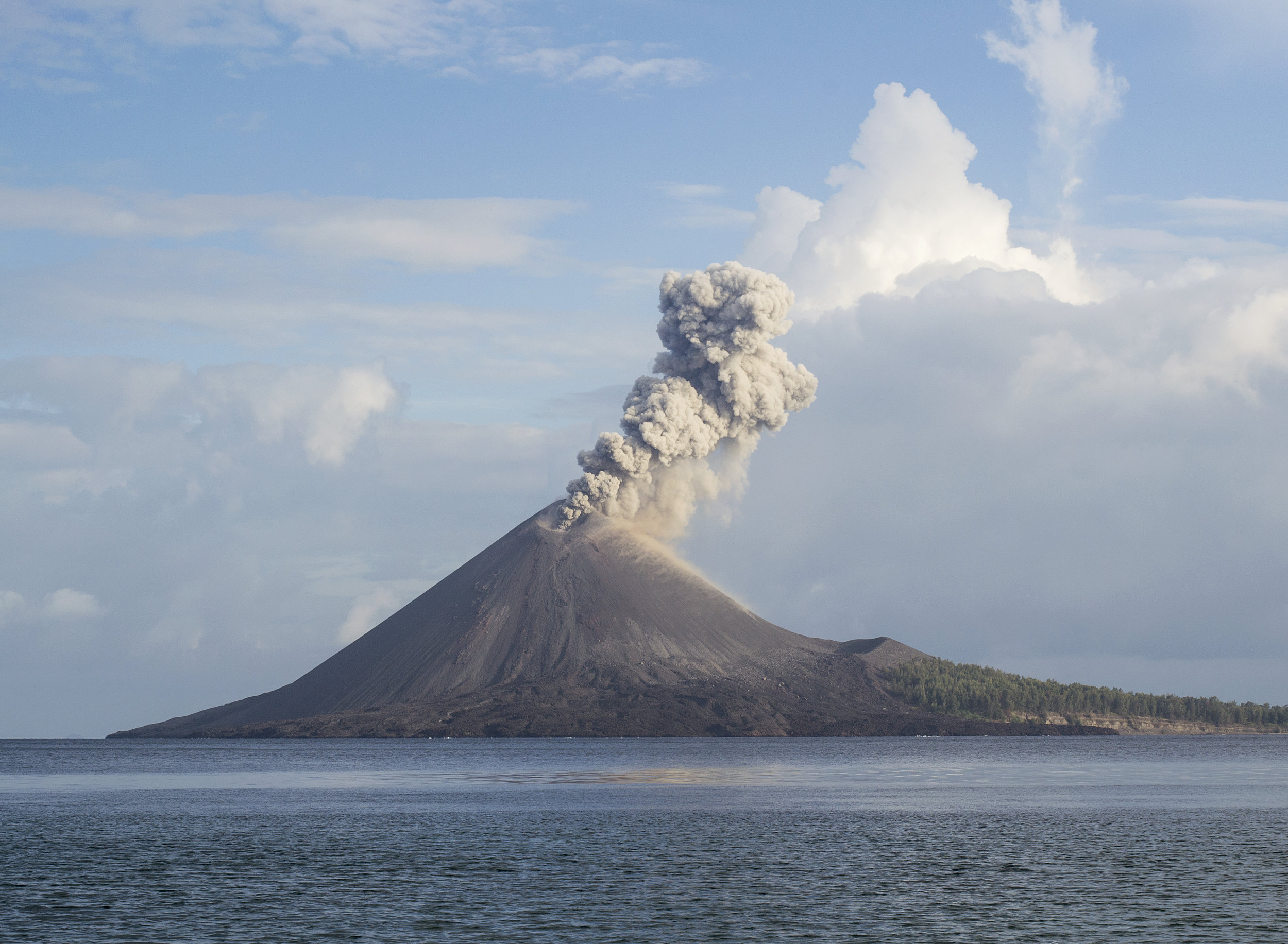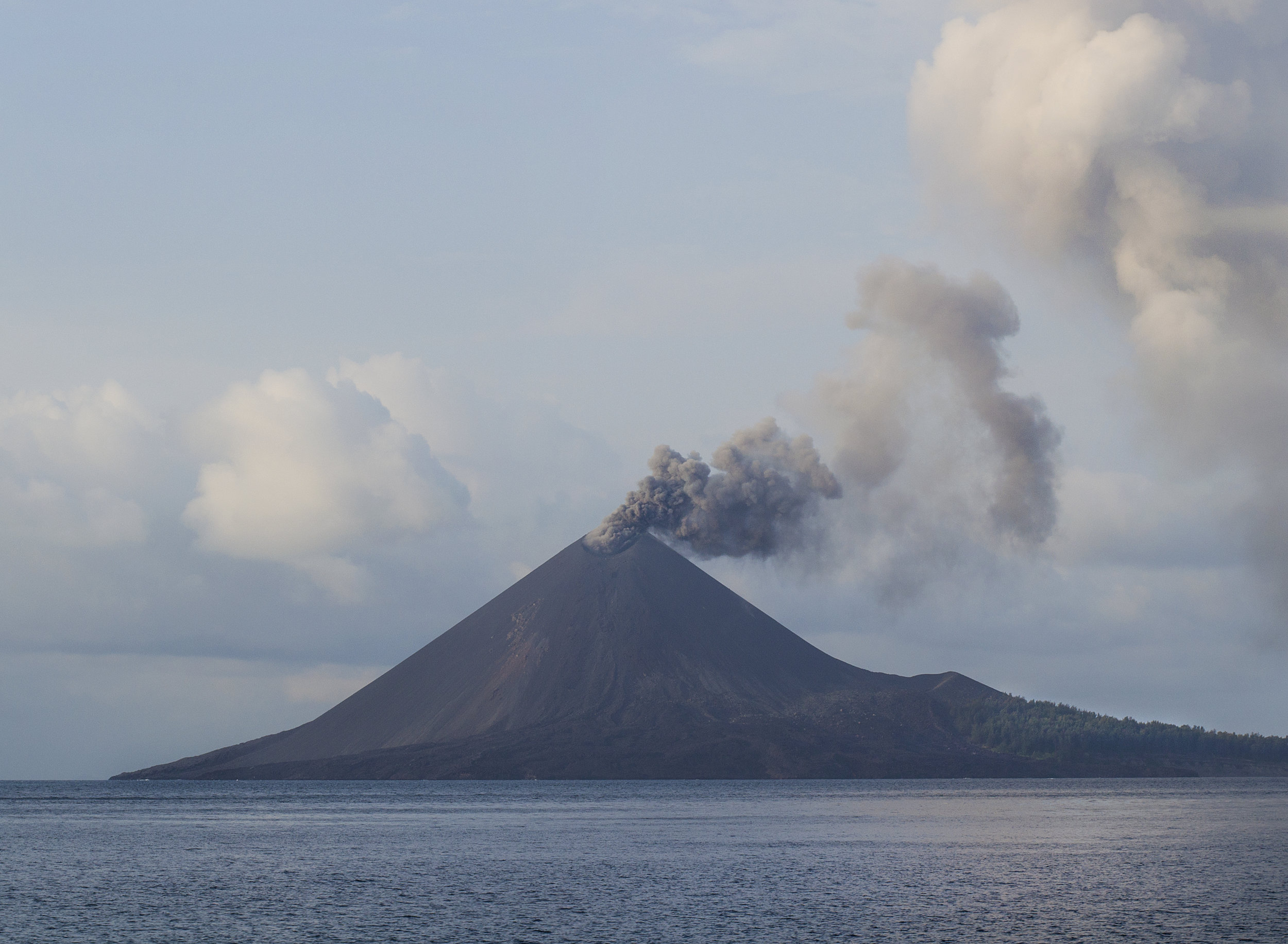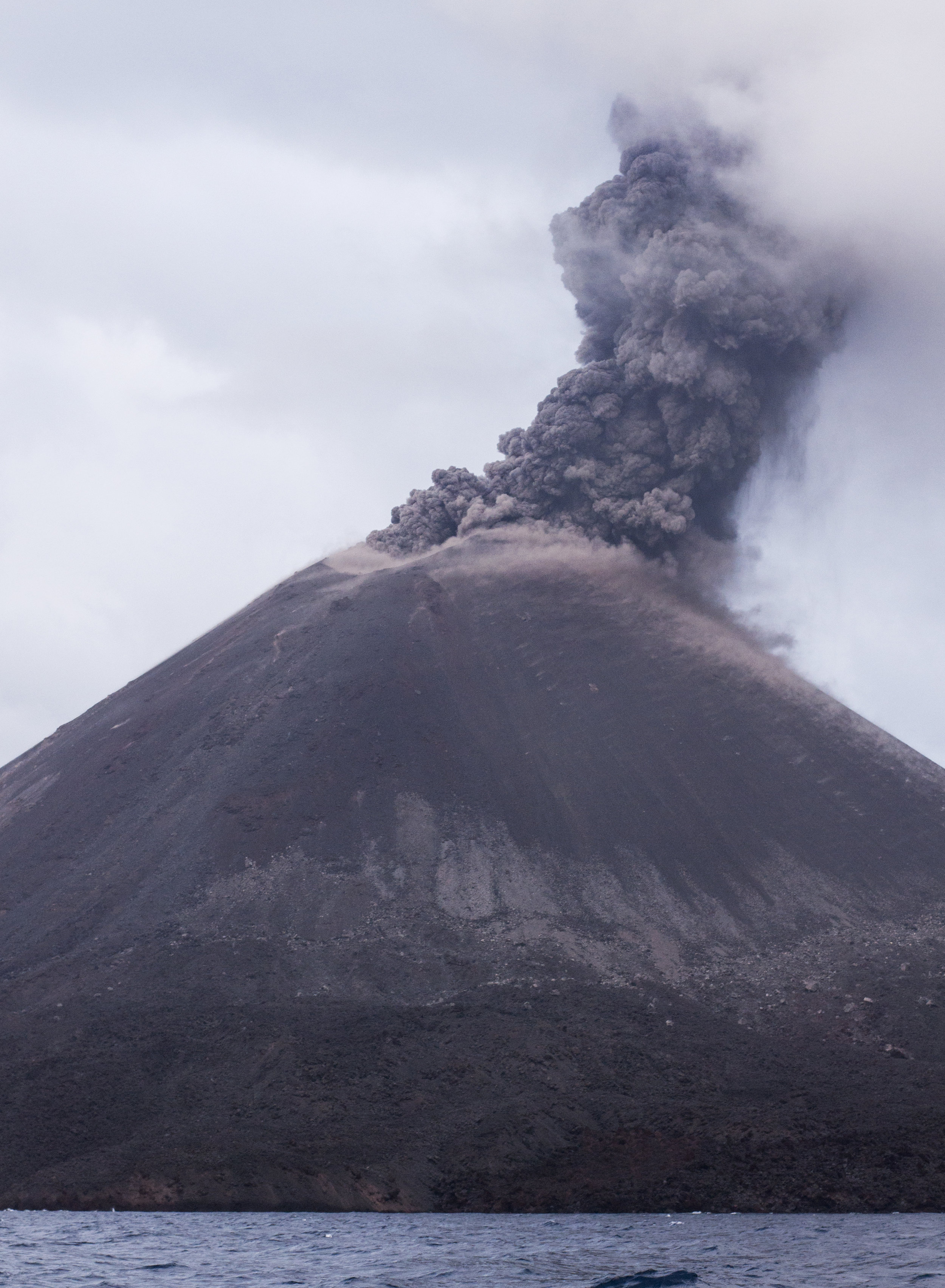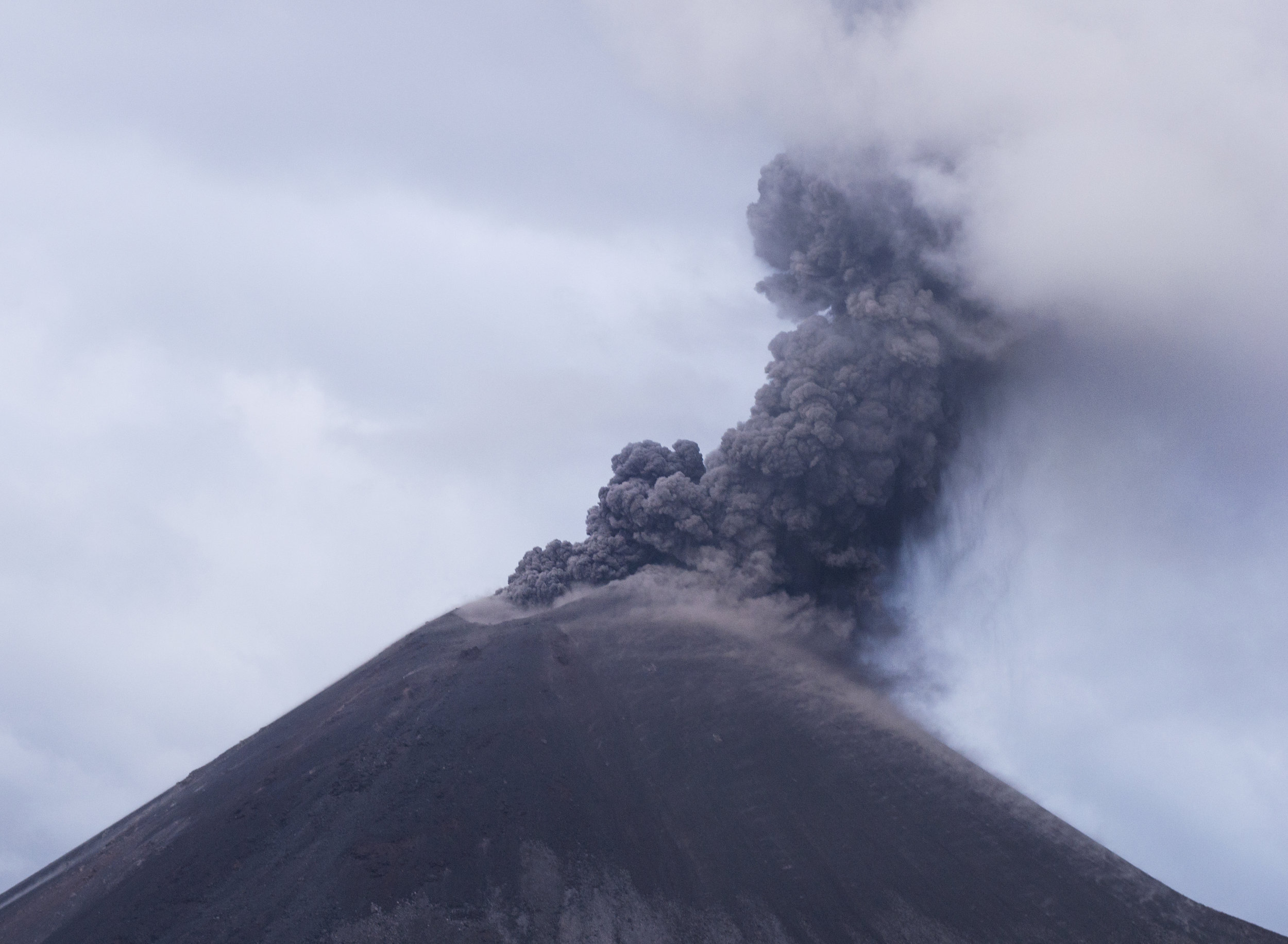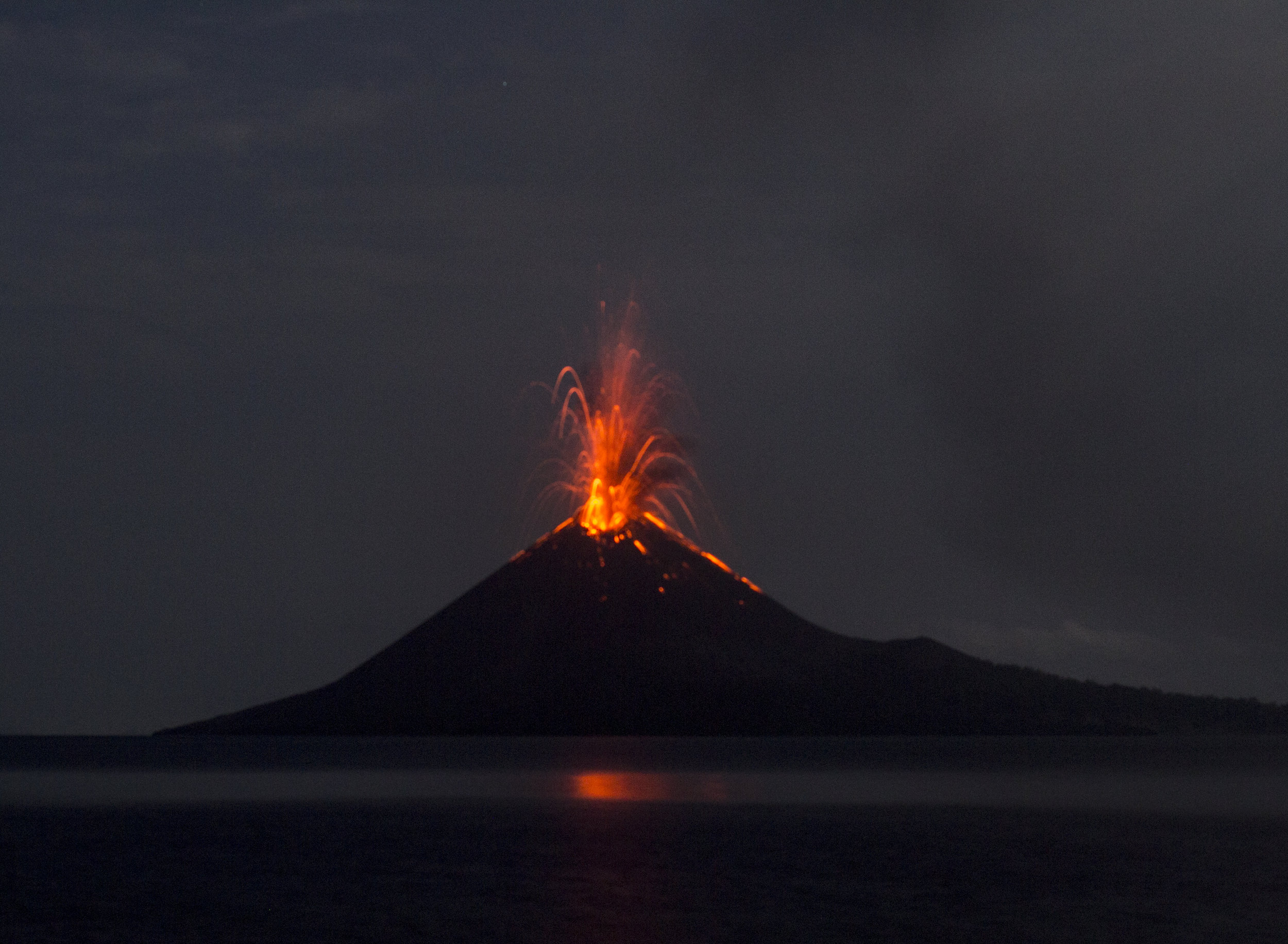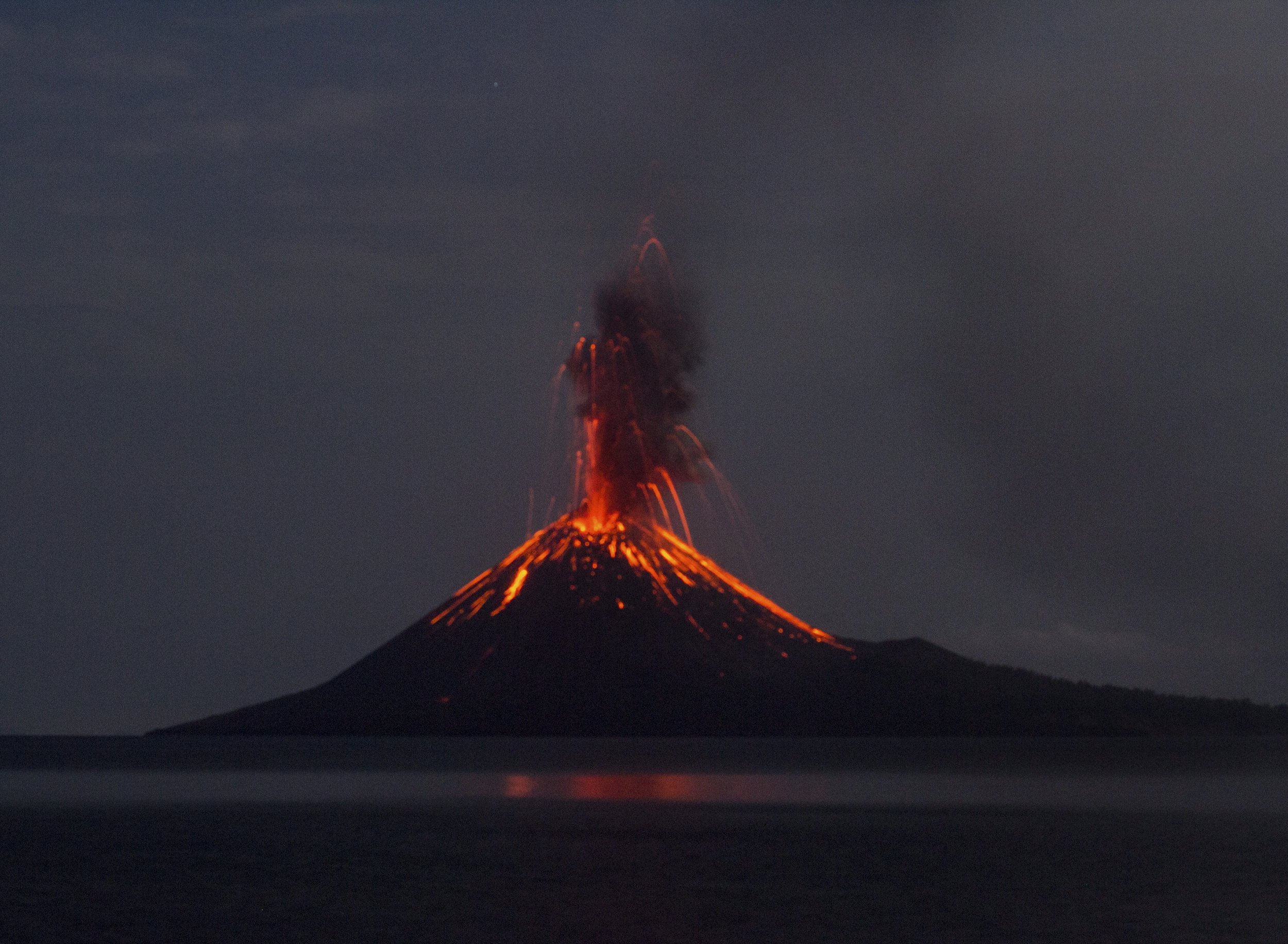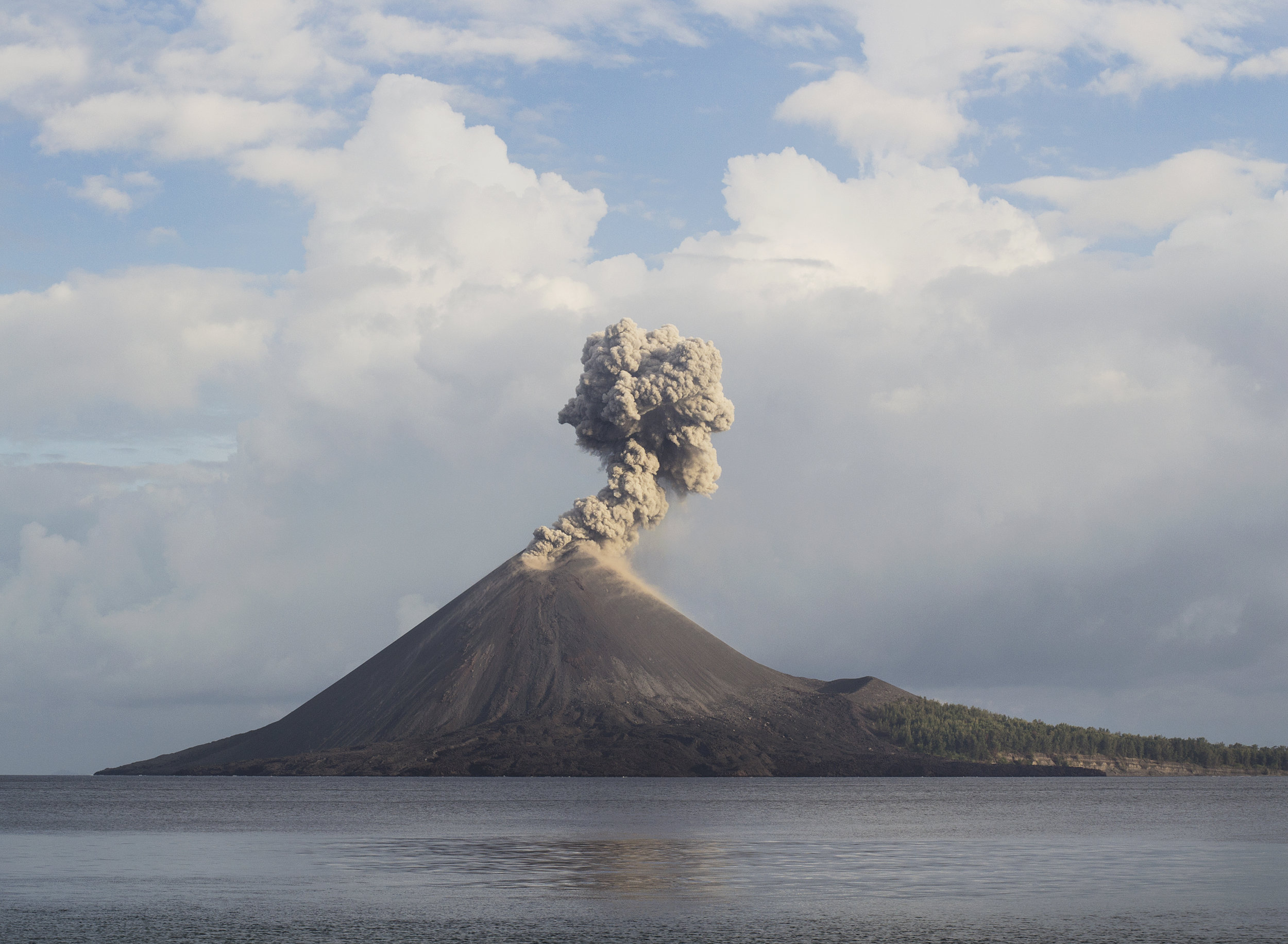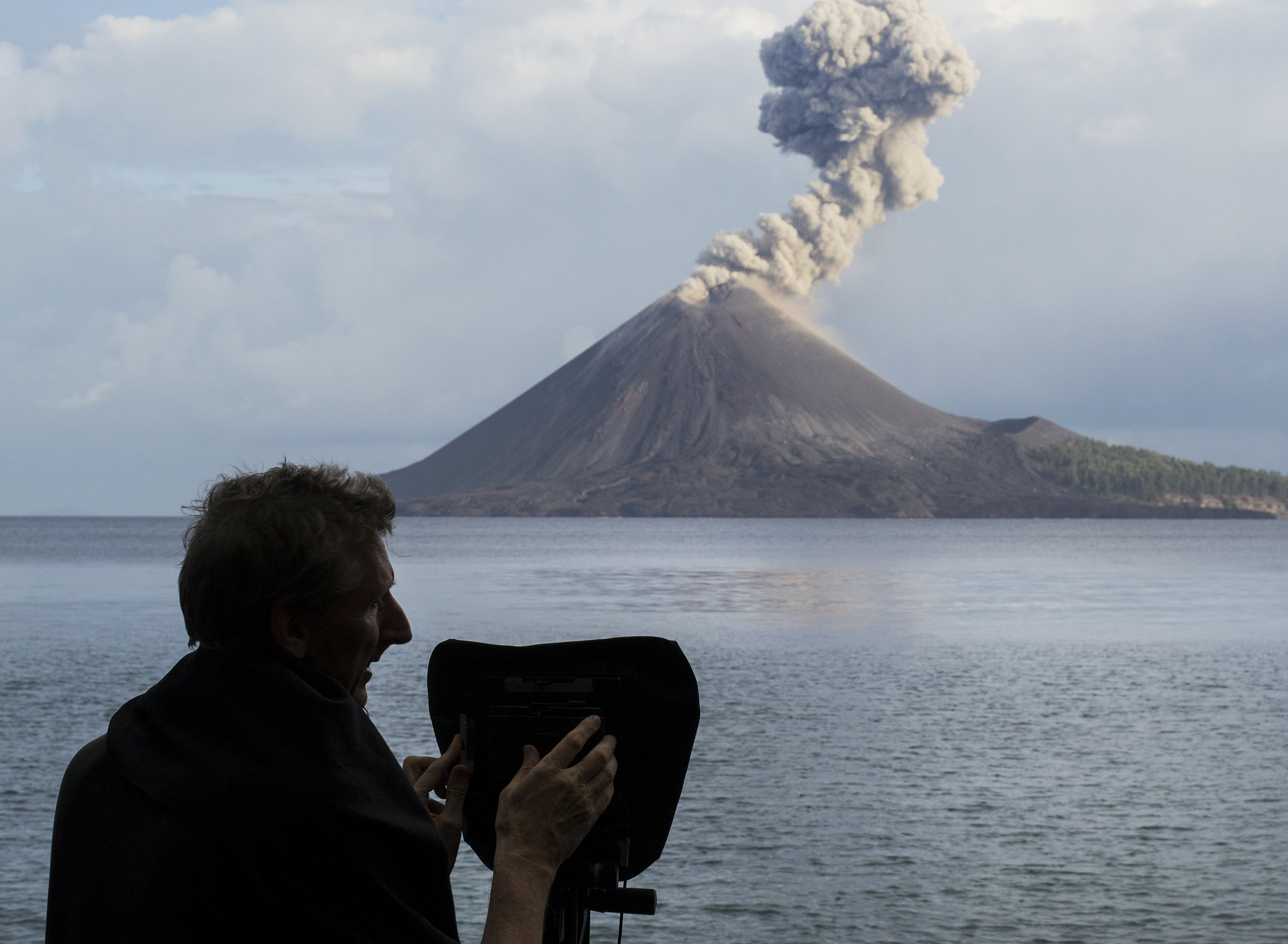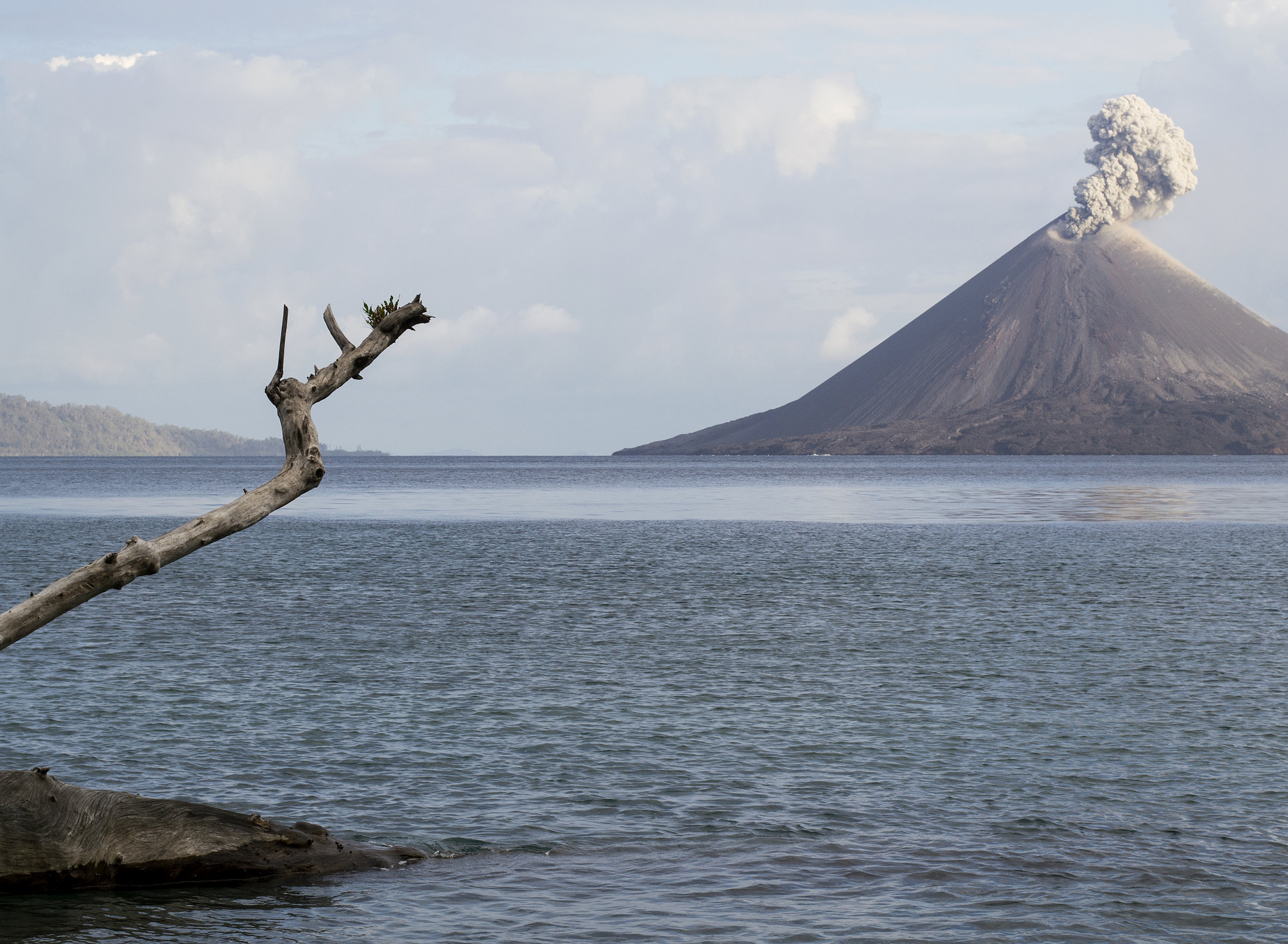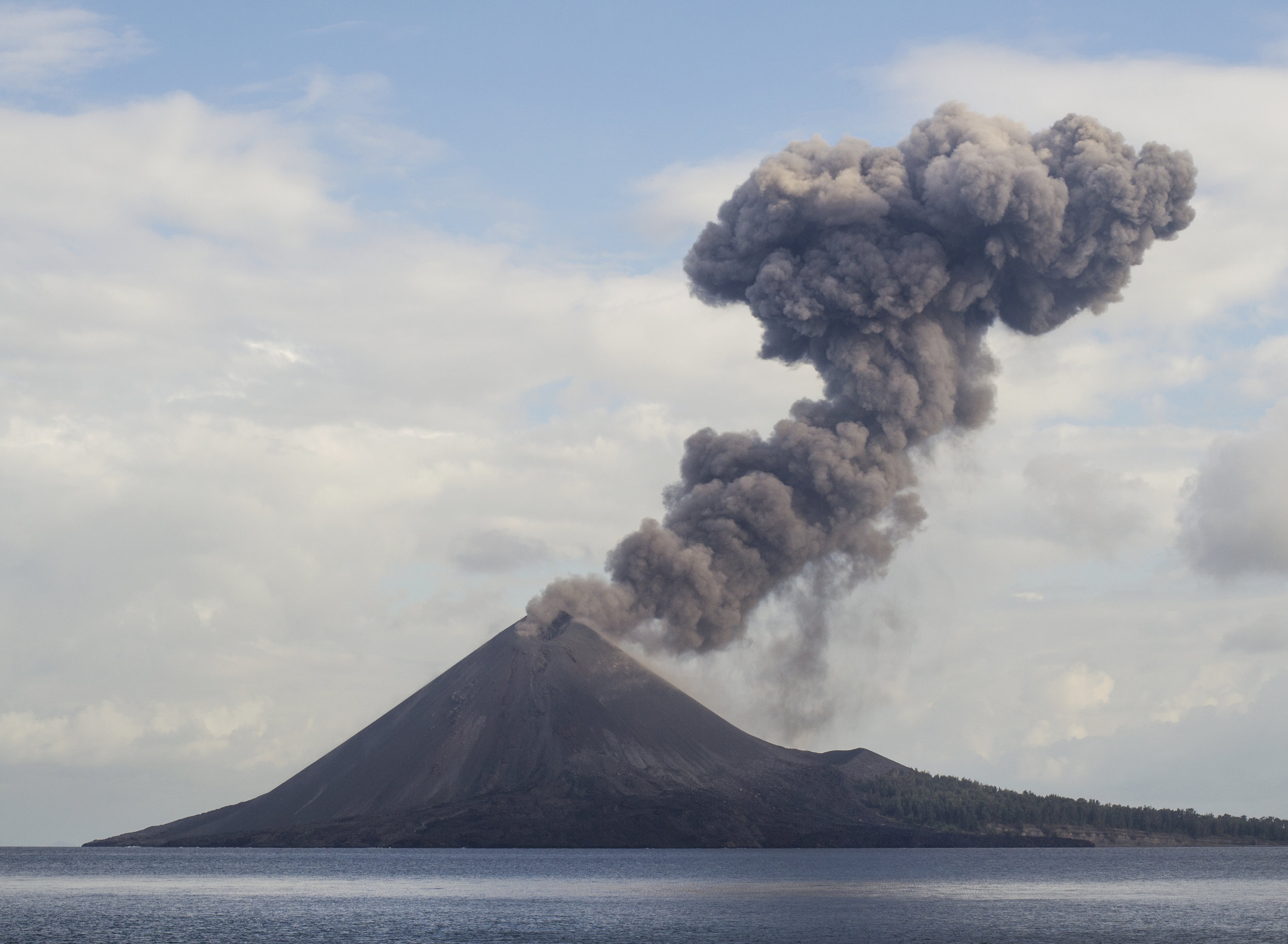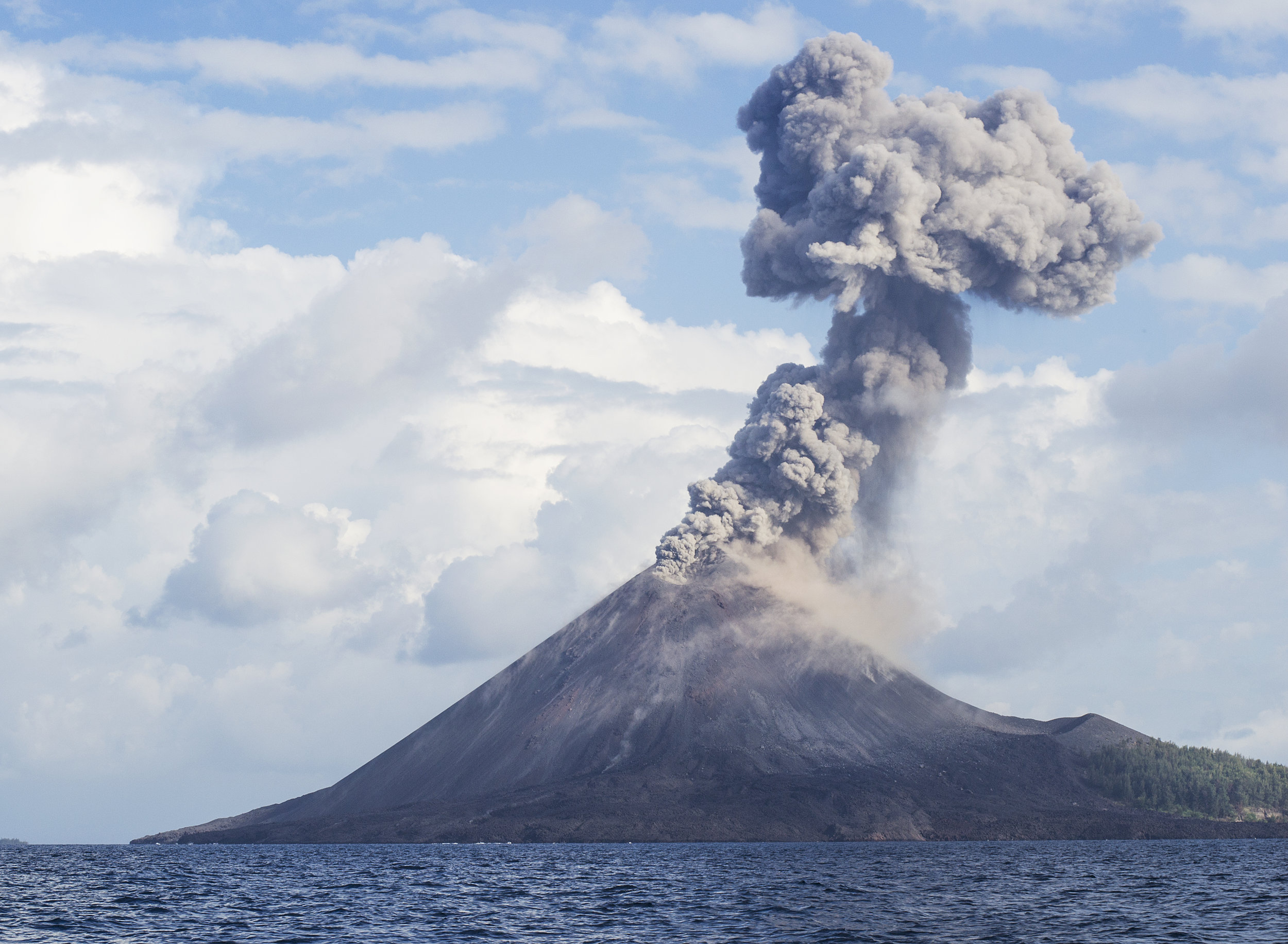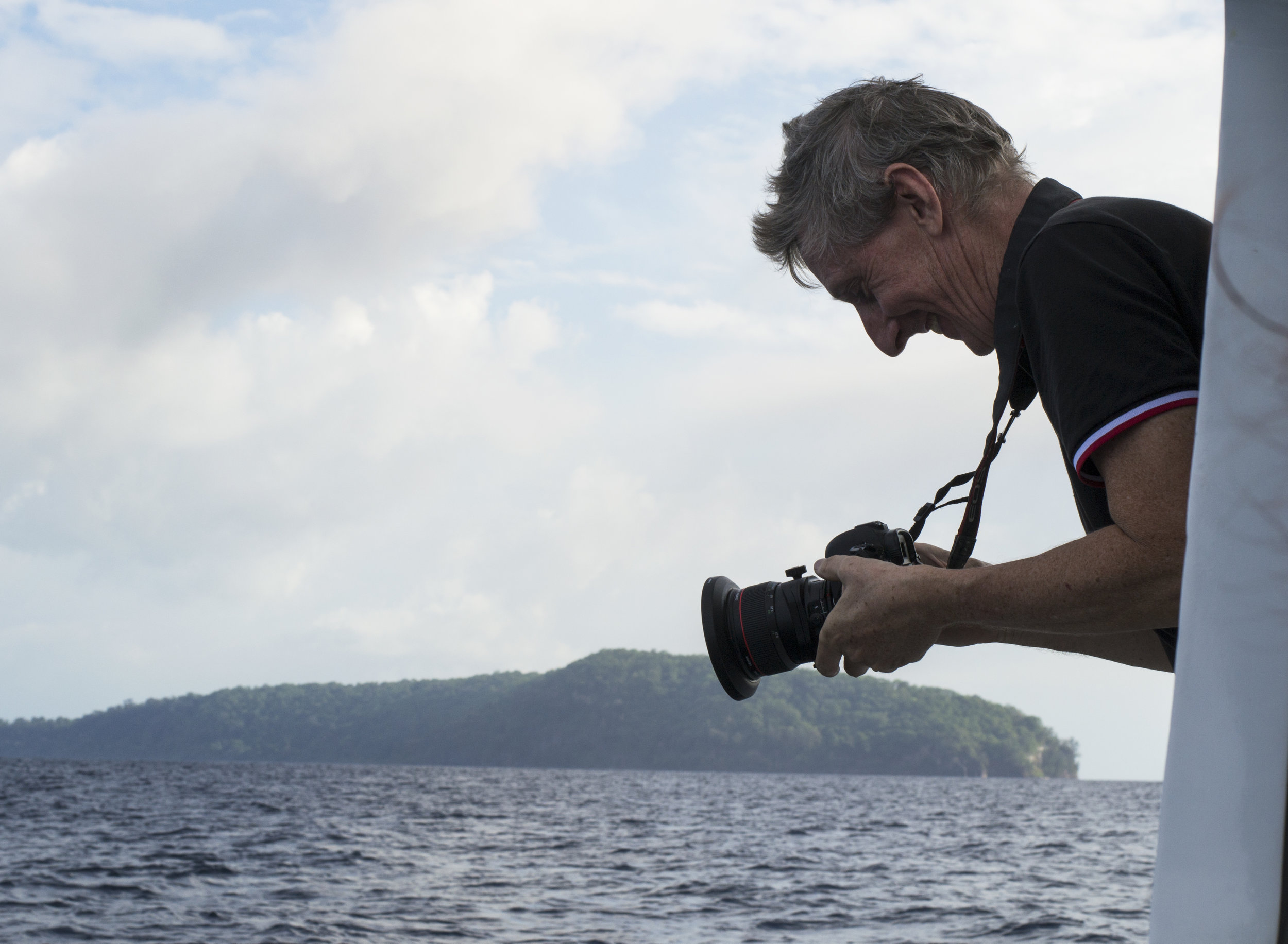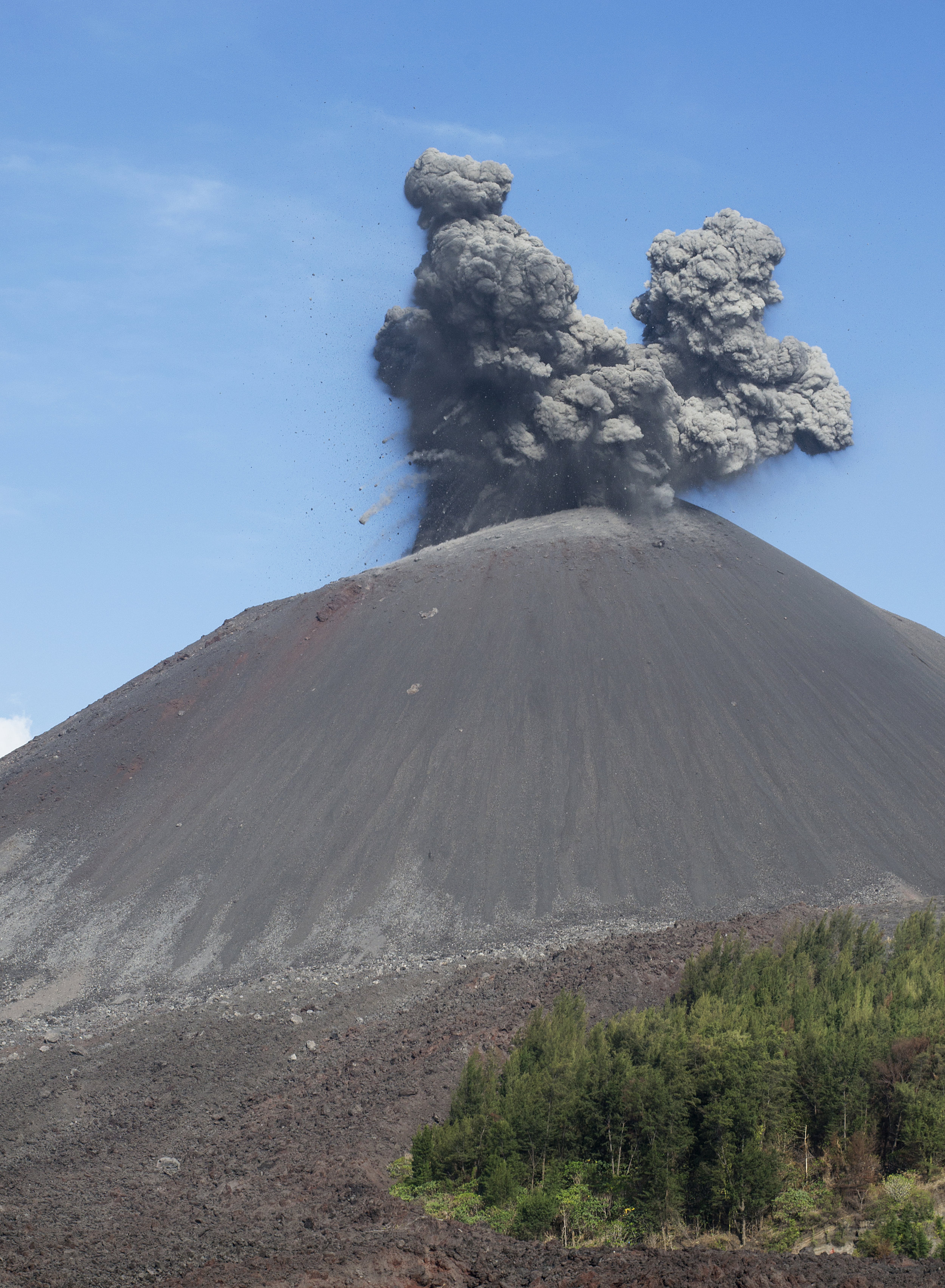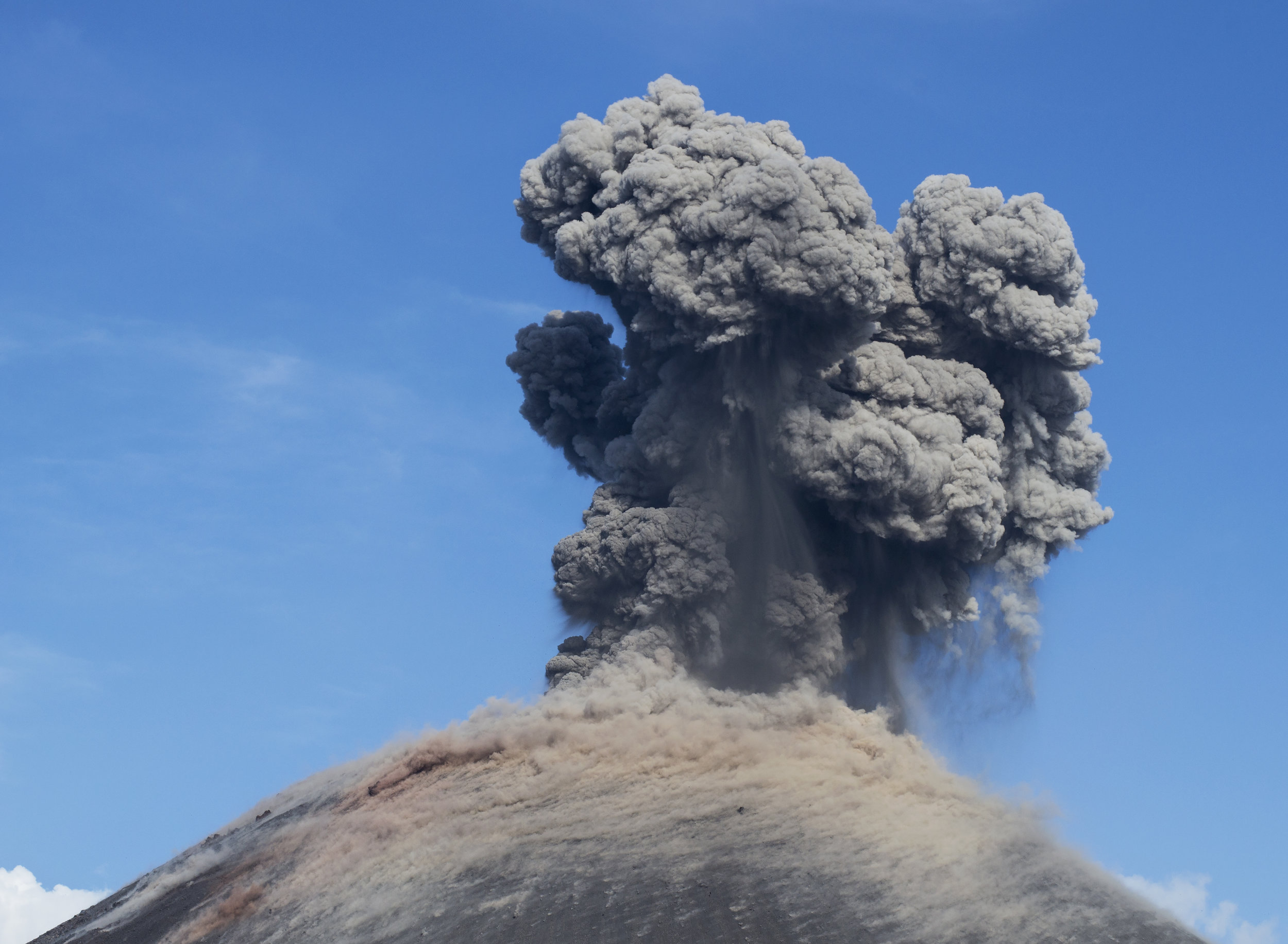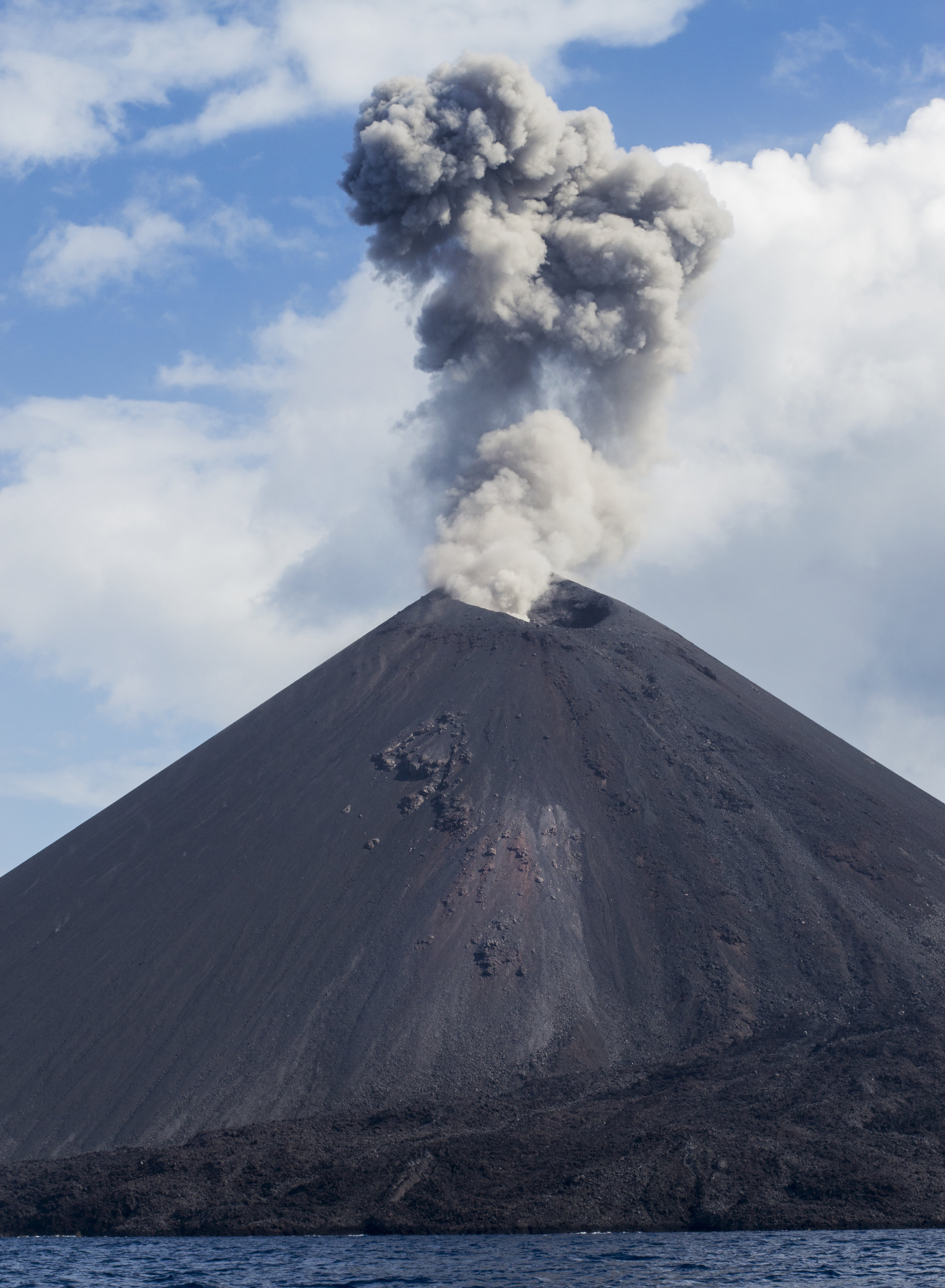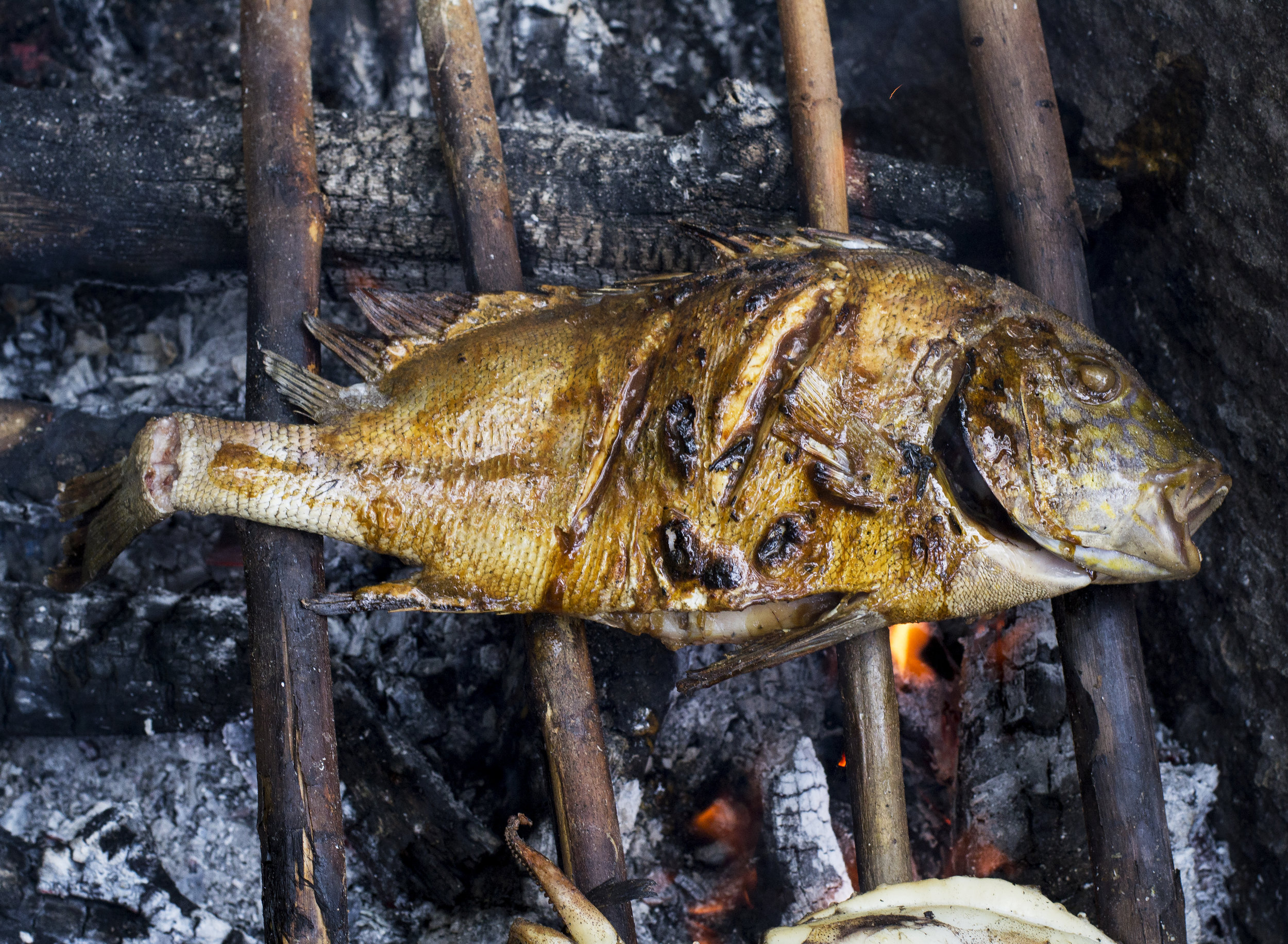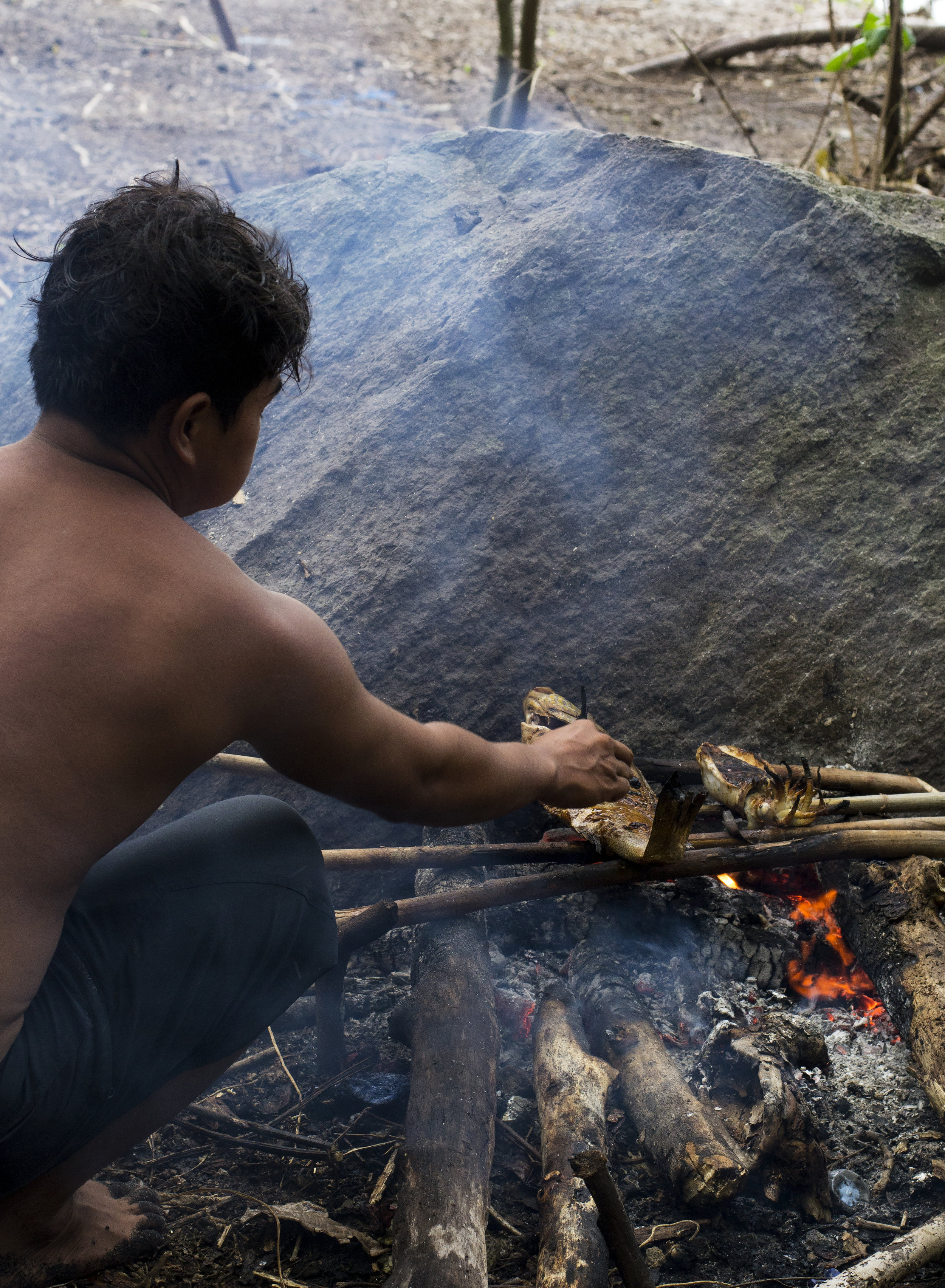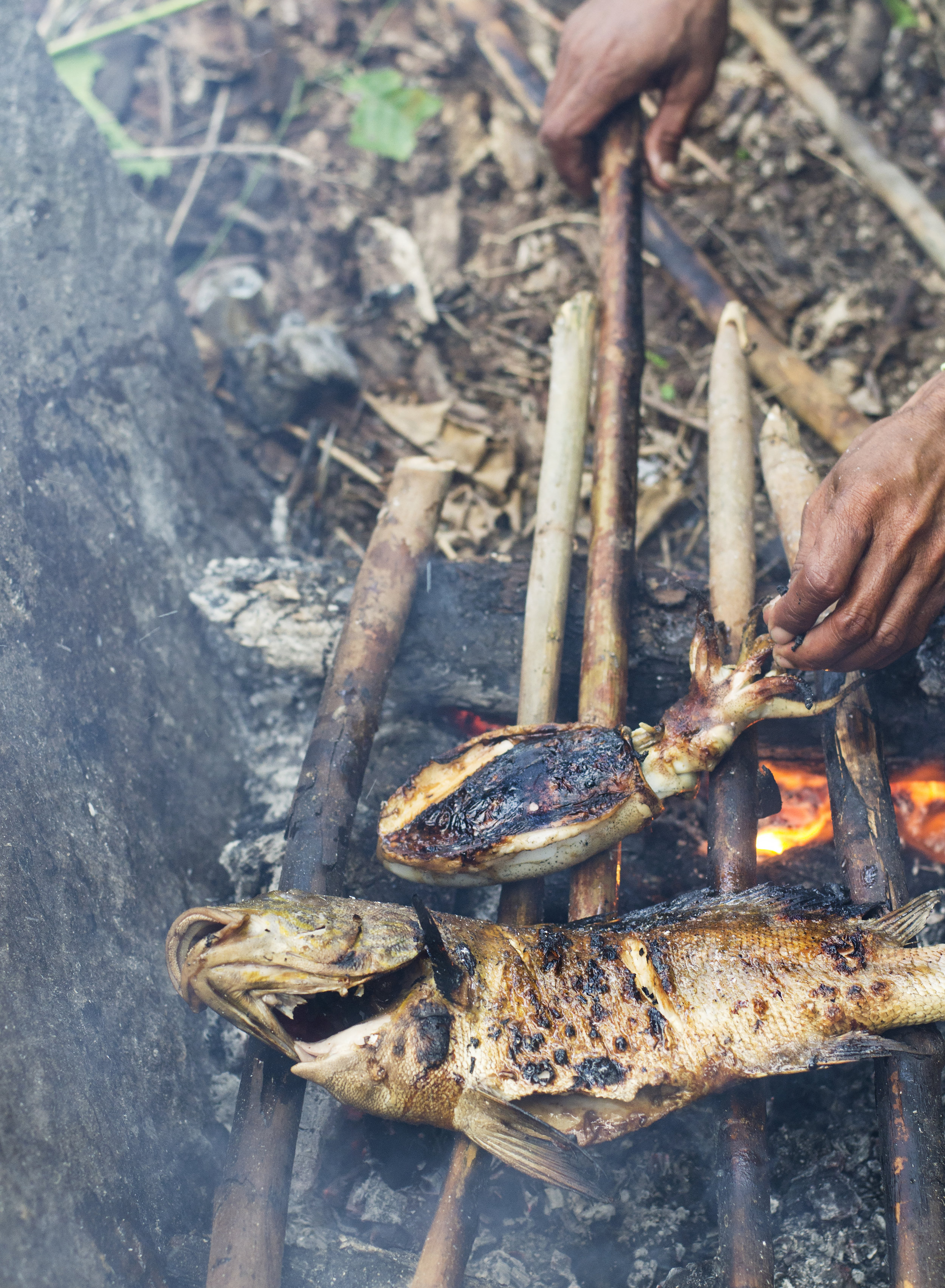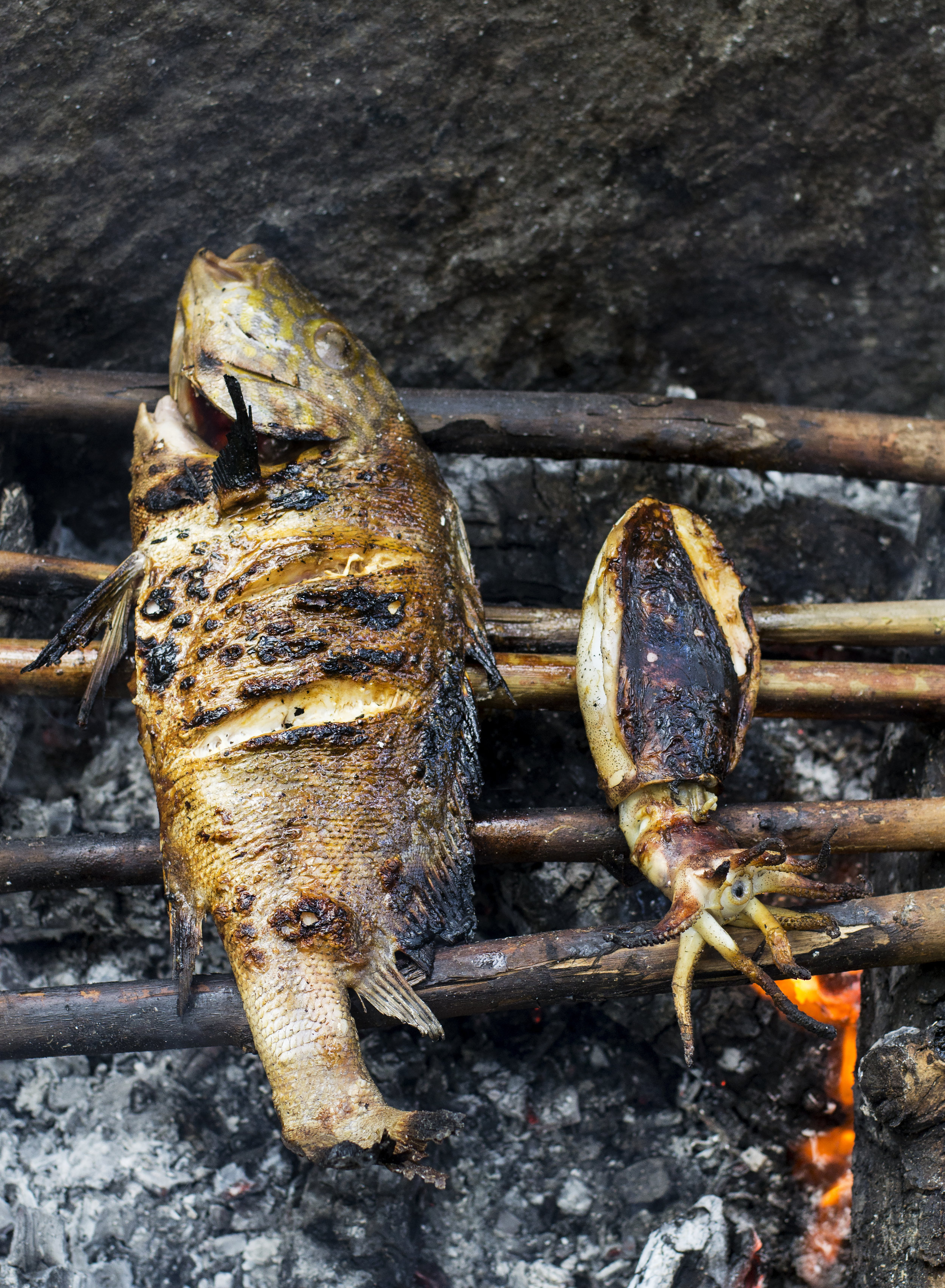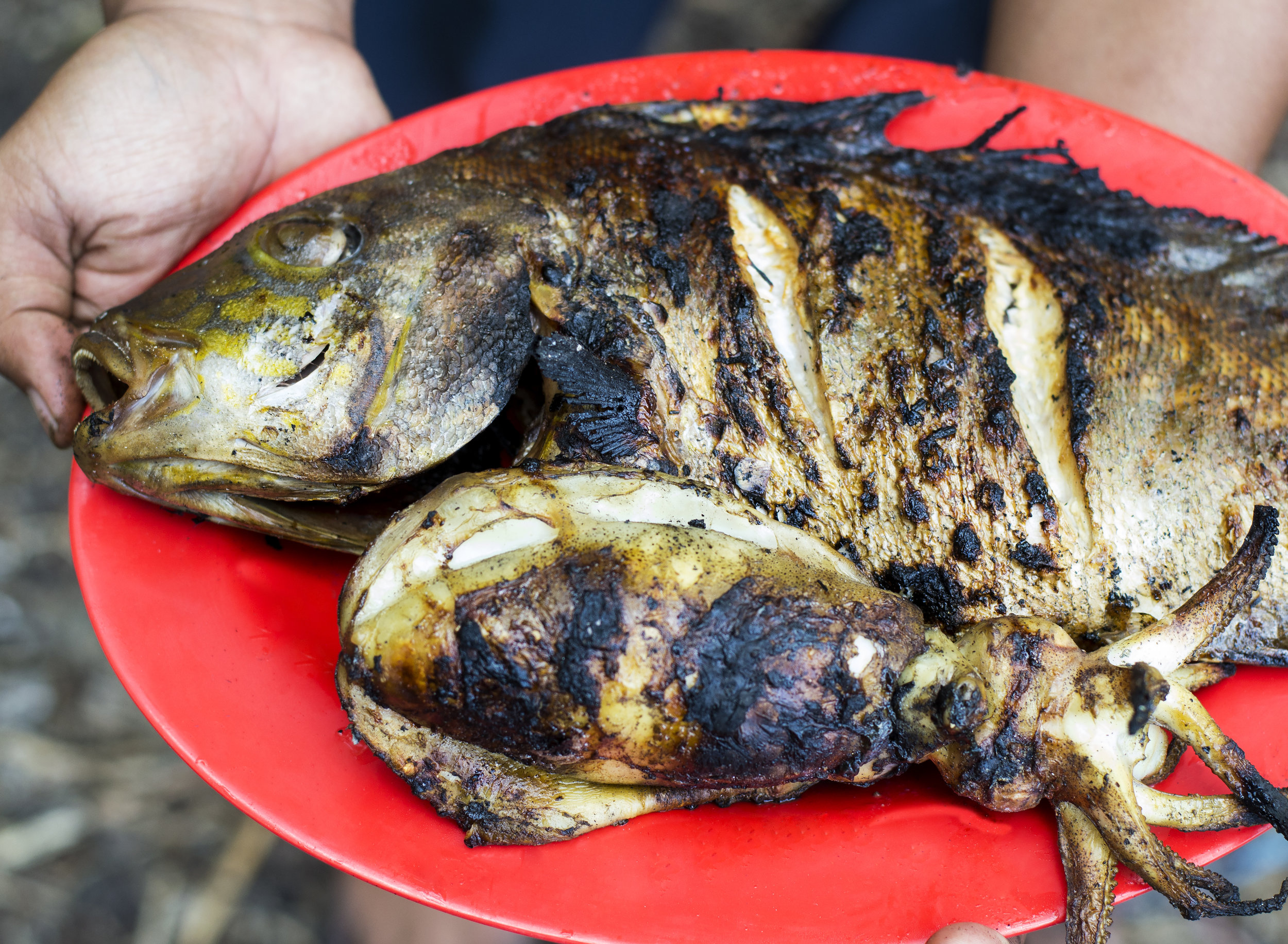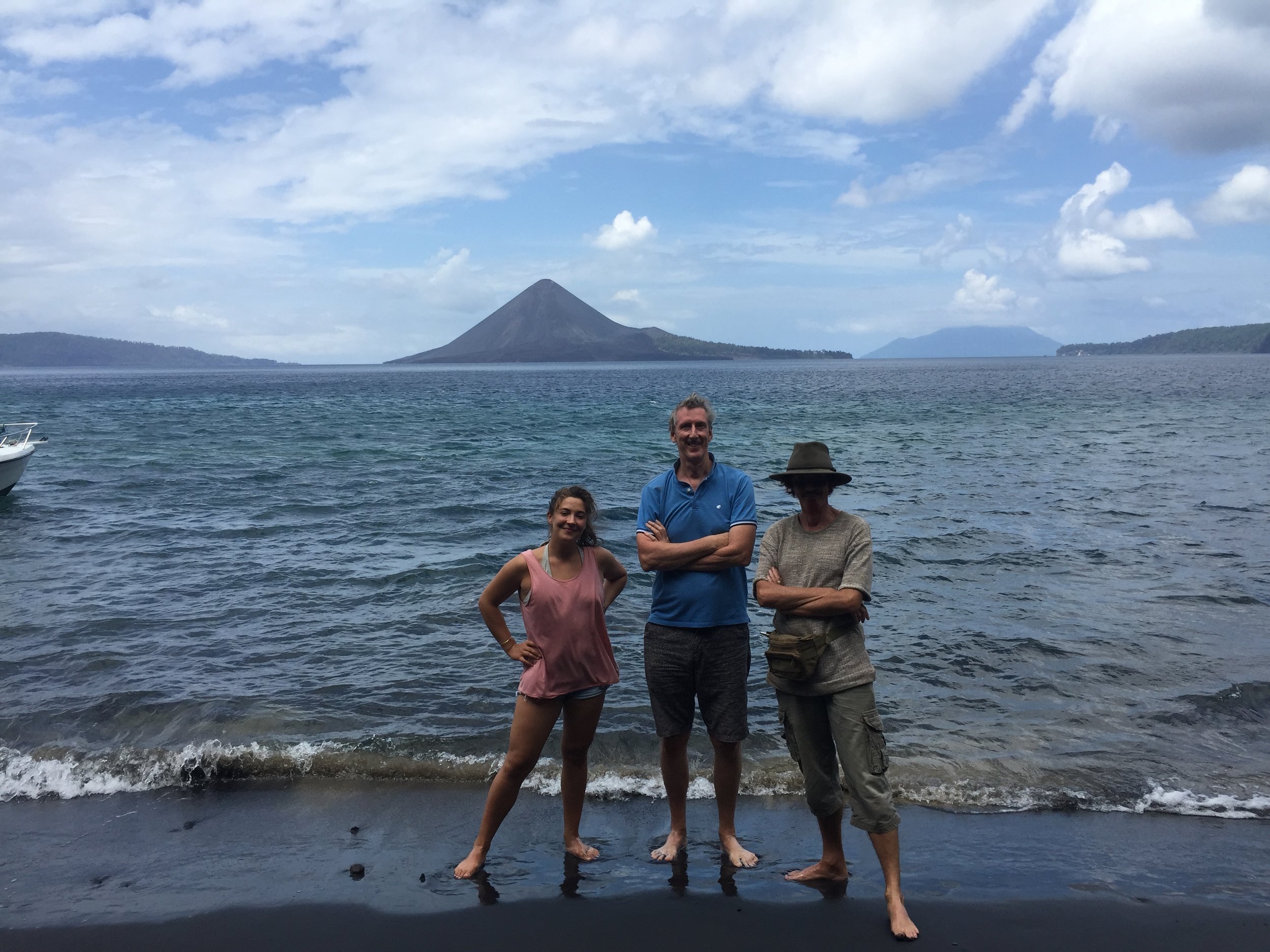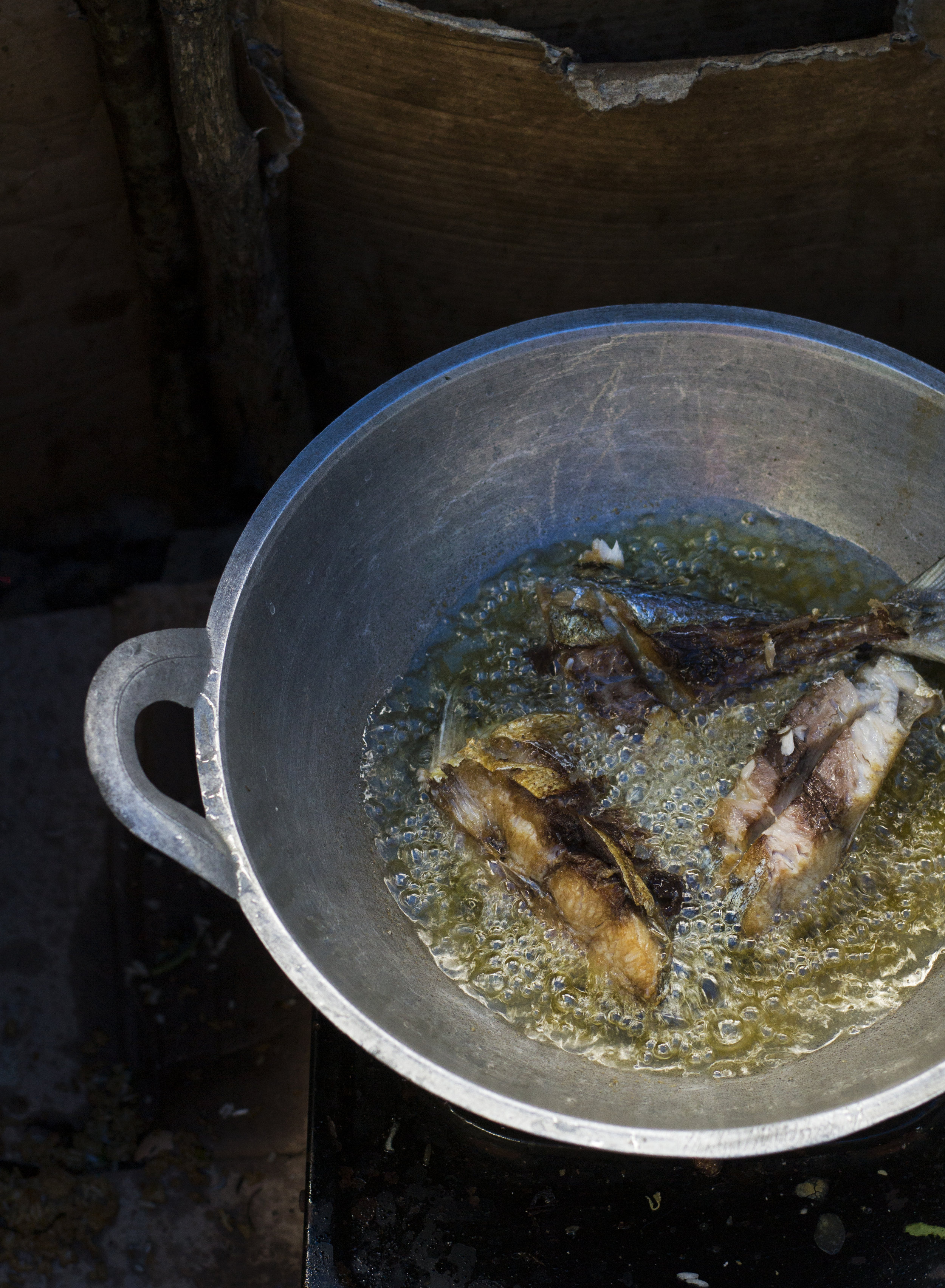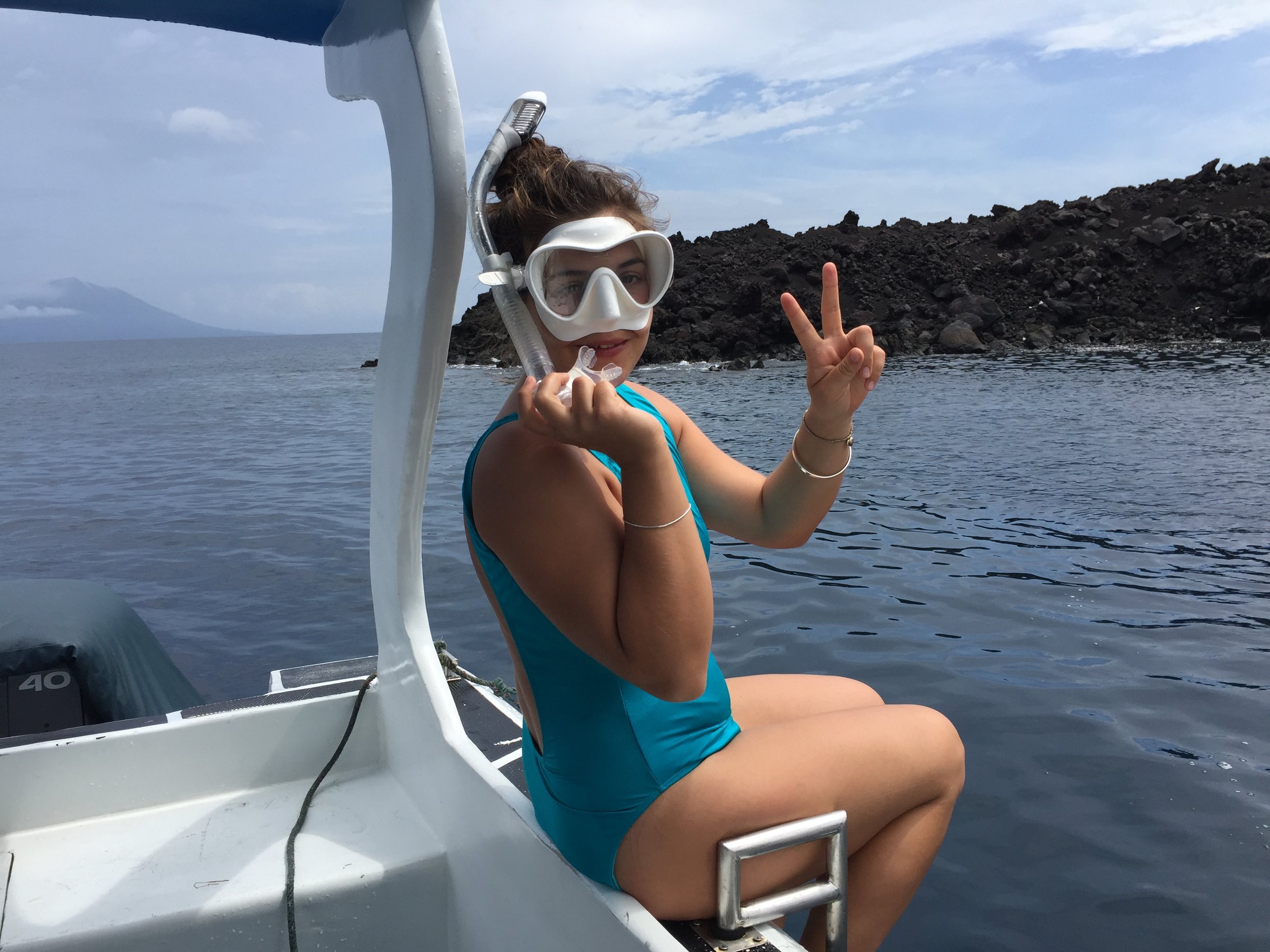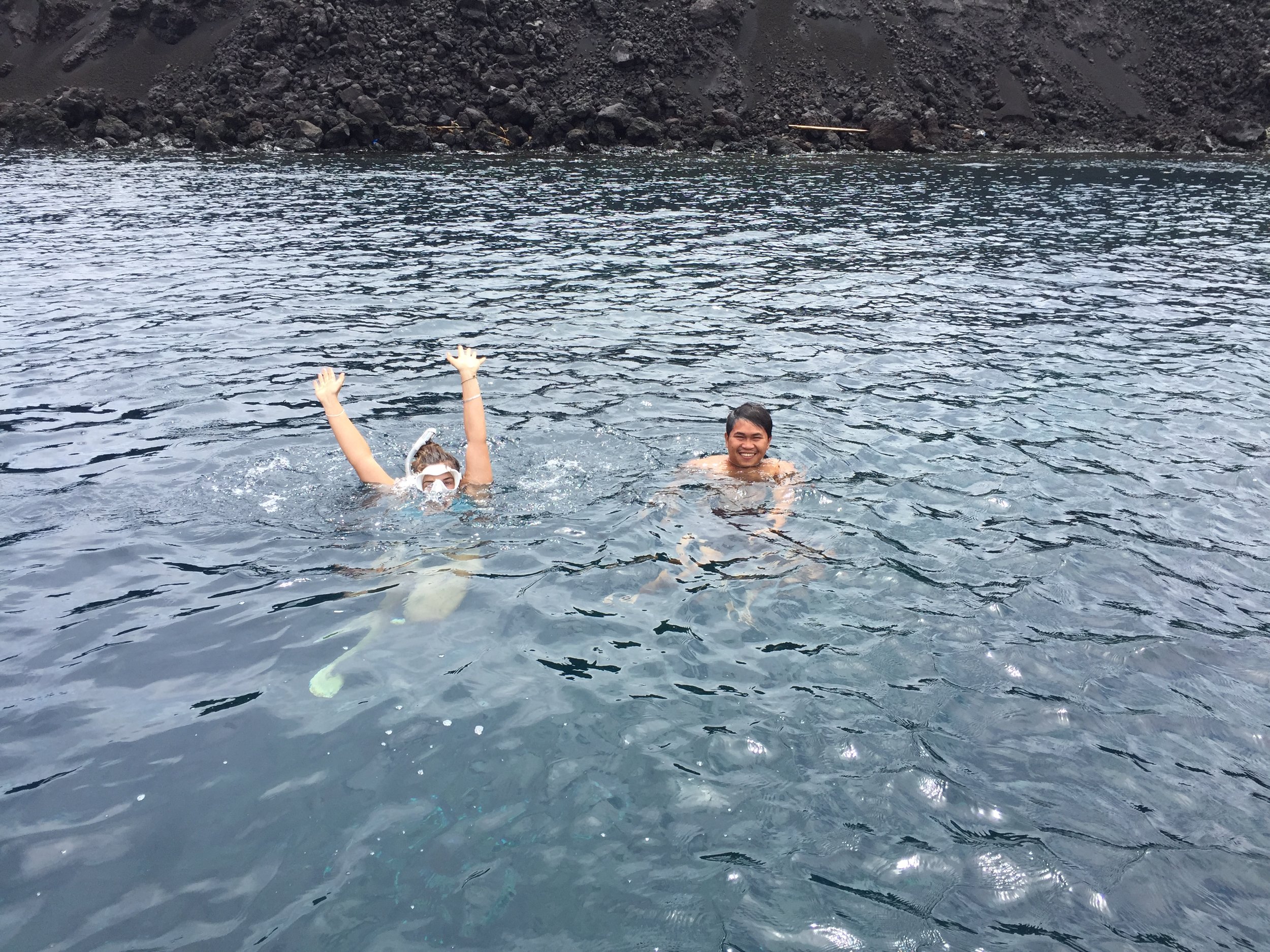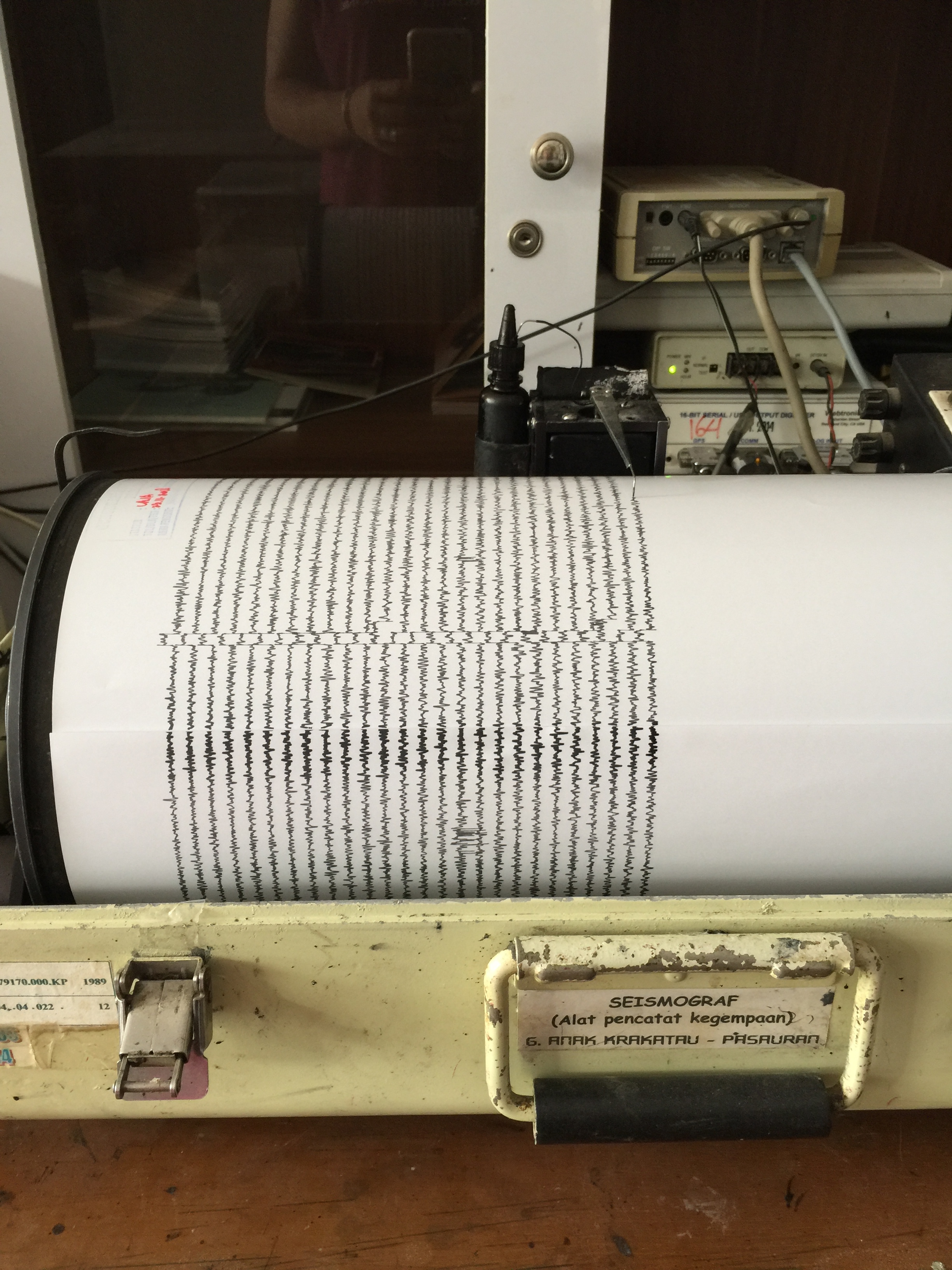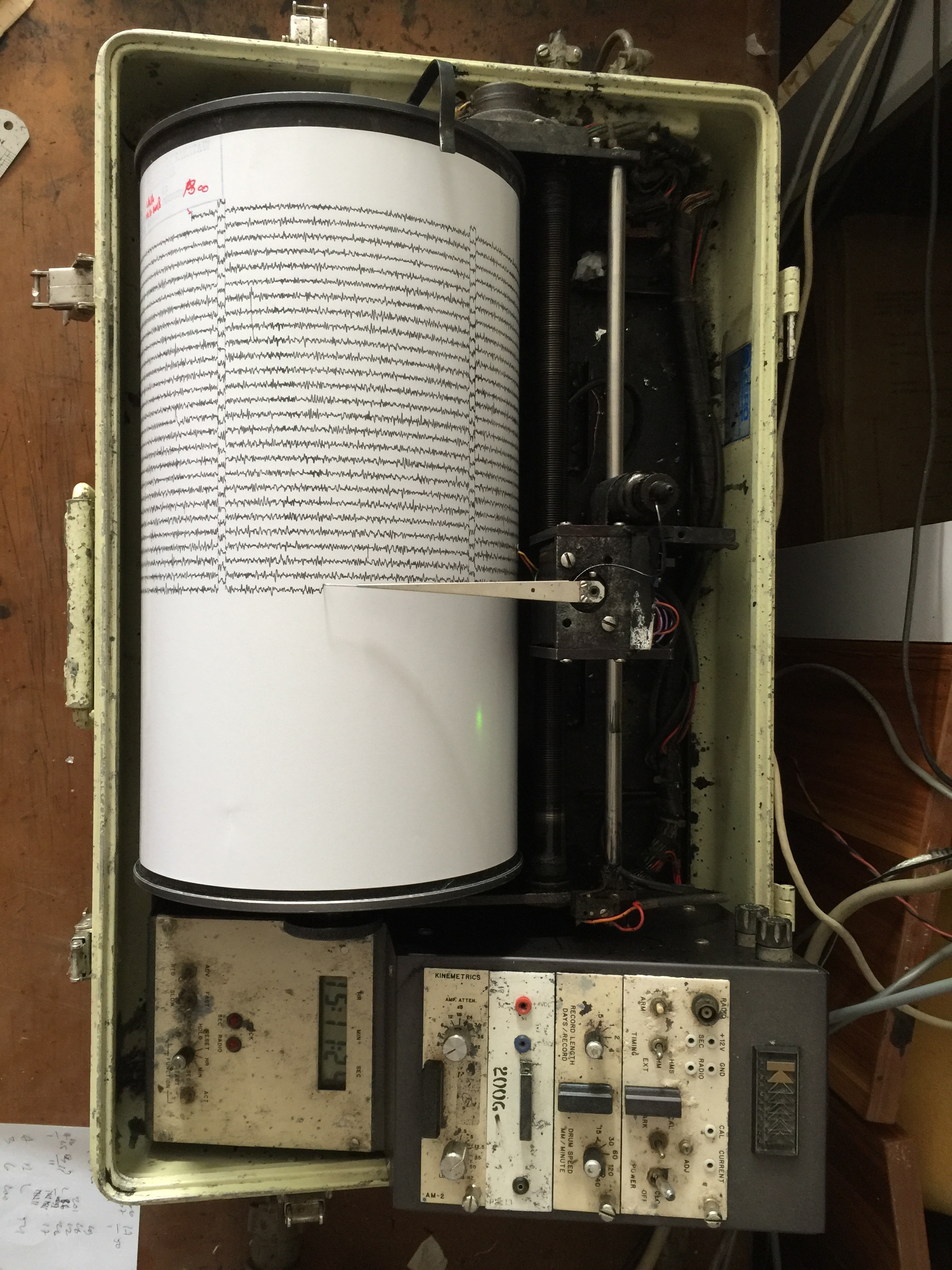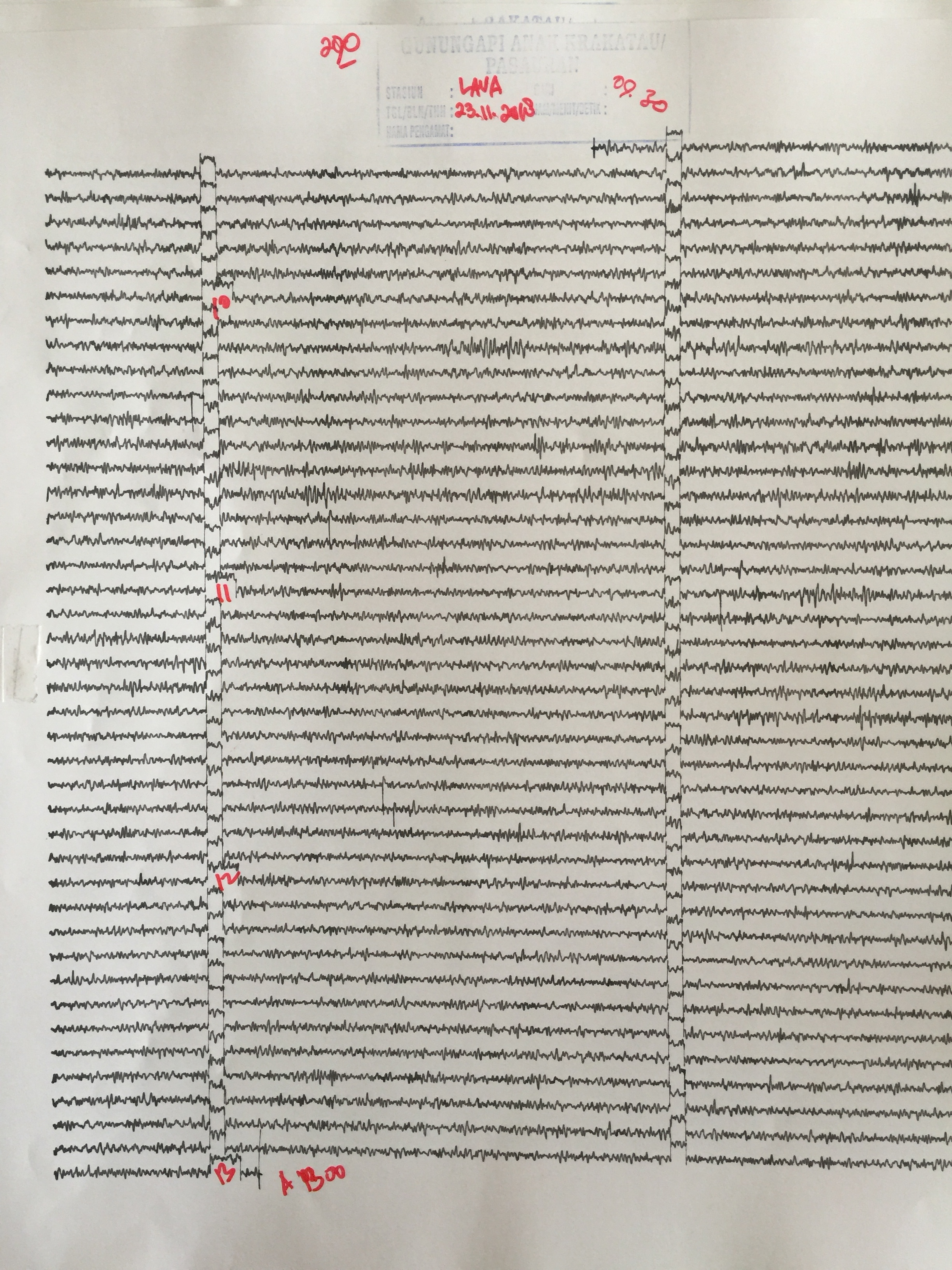I spent two nights in November camping on the volcanic island Krakatoa. I accompanied photographer Martin Westlake who has been running his own photo project on the volcanoes of Indonesia for over ten years. The volcano Krakatoa blew in 1883 and was one of the largest seismic events in history. It caused a year of darkness across the world. We camped on the now dormant, black sandy beach of Krakatoa which looks out towards Anak Krakatau (‘Child of Krakatoa’ Indonesian translation) across the water, about 4km away. The volcano erupted on average every 10 minutes. Huge plumes of smoke billowed from the crater, when we went closer by boat huge rocks could be seen being shot out into the air. Minutes after an eruption sometimes a light shower of black sand would sometimes blow back onto the boat. As night fell the crater glowed and the lava became more visible. Fountains spitting out and down the face of the volcano made for excellent long exposure shots (annoyingly I didn’t quite crack these and they’re out of focus). The eruptions caused sonic booms which woke me up a few times through the night. I could see the volcano from my tent, I loved sitting up in bed watching the lava shows when I heard a sonic boom. Our guide made us beautiful food, whole fish and squid cooked over an open fire, fried fish, rice, tofu and vegetables, I enjoyed photographing these too. One of my favourite hobbies is snorkelling, and there were excellent reefs to be seen around the edge of the active volcano. On the last morning activity ceased, and perhaps insensibly, I went snorkelling on the edges of Anak Krakatau. The black sandy floor of the sea made the vibrant colours of corals and fish stand out. The underwater landscape was immense too with deep canyons suddenly turning shallow and drop offs into deep blue water to swim over and look down into. The water became hot in some places, like bath water, and air bubbles streamed out from the sand. When we returned to the mainland we went to the volcanology centre where we could see the charts of activity over the time we’d been there.
Update:
On December 22nd Anak Krakatau had a huge eruption which caused the volcano to collapse into the sea triggering a tsunami which affected coastlines around the Sunda Strait between Java and Sumatra. A three mile exclusion zone around the volcano was put into place. Satellite imaging now shows how the landscape of the volcano has changed. My photographs were taken a month prior to the day the disaster happened.
“What was once a crater at the summit of a 340m-high edifice has been completely broken open to form a small bay. Indonesia's disaster agency says more than two-thirds of Anak Krakatau's volume (150-170 million cubic metres) is missing. Much of it is assumed to have slipped into the sea in the colossal landslide that produced the tsunami.” Jonathan Amos, BBC Science
